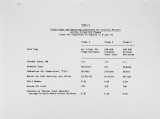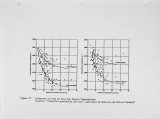| Title |
The Combustion, Heat Transfer, Pollutant Emission and Ash Deposition Characteristics of Concentrated Coal Water Slurries |
| Creator |
Beer, J. M.; Farmayan, W. F.; Monroe, L. S.; Srinivasachar, S.; Teare, J. D. |
| Publisher |
University of Utah |
| Date |
1983 |
| Spatial Coverage |
Akron, Ohio |
| Abstract |
Experimental results are reported from an ongoing combustion characterization study on coal-water slurries (CVS) being conducted at the MIT Combustion Research Facility (CRF). The objectives of the study are to characterize CVS flames, obtained under a variety of input conditions characteristic of boiler operation, with respect to ignition, flame stability, carbon conversion efficiency, radiative heat transfer, gaseous pollutant emissions (NO ) and the physical-chemical nature of the "in-flame" particulate matter and ash deposits formed upon the fireside surfaces of the combustion chamber. The CRF is a 1.2 m x 1.2 m cross-section, 10 m long, variable heat sink combustion tunnel, equipped with a variable swirl burner of up to 3 MWth multi-fuel firing capability, and is used for detailed study of boiler type turbulent diffusion flames. Combustion tests were carried out with a coal-water slurry provided by the Occidental Research Corporation, containing 10% coal by weight. The slurry was formulated using an Eastern Kentucky bituminous coal of the Island Creek Coal Company, and was ground to produce a bimodal size distribution to facilitate a high coal mass loading. The major input and operating variables examined in the study include atomizer spray quality and pattern, combustion air swirl and exit velocity at the burner, and heat extraction at the burner and along the combustion chamber length. The measurements include determinations of in-flame temperatures and gaseous/solids species concentrations, the axial distribution of radiative heat flux from the flame to the bounding surfaces of the combustion chamber, and the characterization of a number of in-flame particulate and ash deposit samples by scanning electron microscopy and energy dispersive x-ray spectrometry. The experiments have demonstrated that CVS ignition and flame stability, carbon ignition and flame stability, carbon conversion efficiency, ash deposition and NO emission all raise potentially serious technical problems, but that these problems can be solved or ameliorated by careful selection of fuel properties and flame input conditions. |
| Type |
Text |
| Format |
application/pdf |
| Language |
eng |
| Rights |
This material may be protected by copyright. Permission required for use in any form. For further information please contact the American Flame Research Committee. |
| Conversion Specifications |
Original scanned with Canon EOS-1Ds Mark II, 16.7 megapixel digital camera and saved as 400 ppi uncompressed TIFF, 16 bit depth. |
| Scanning Technician |
Cliodhna Davis |
| ARK |
ark:/87278/s6s75jvs |
| Setname |
uu_afrc |
| ID |
247 |
| Reference URL |
https://collections.lib.utah.edu/ark:/87278/s6s75jvs |













































